Disclaimer: This blog in no way is implying the Silent Hill franchise and its creators of plagiarism or infringing on copyright. This is just a fun exercise many other horror game essayists have done prior to the publishing of this blog. Both Jacob's Ladder and the Silent Hill games can be enjoyed together, as they should.
Preamble (Also, SPOILER WARNING!)
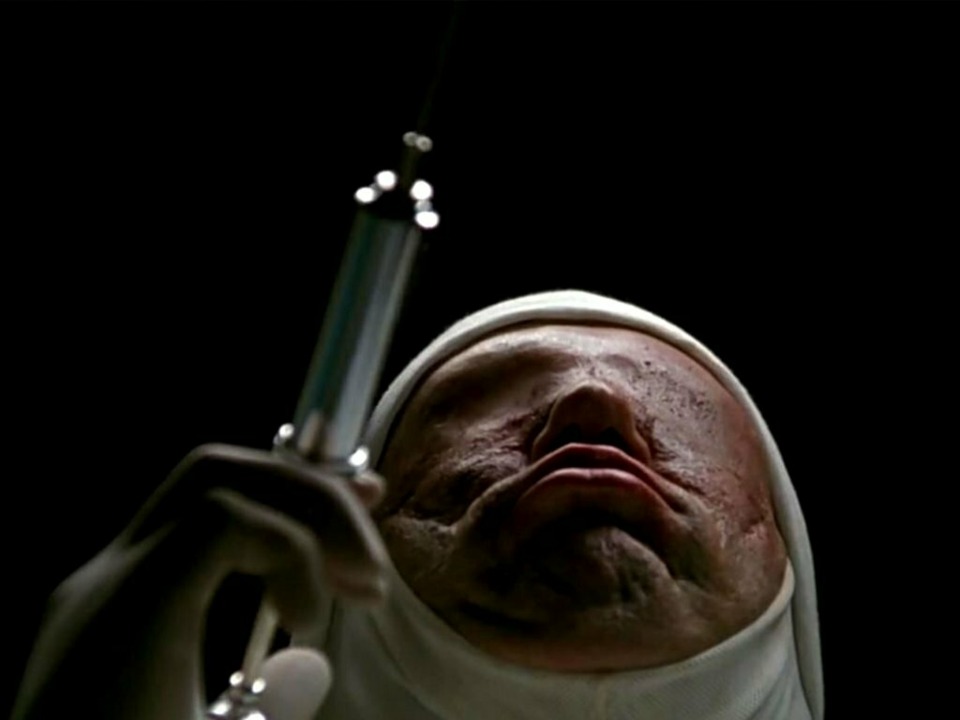
First off, I want to clarify that pointing out how Jacob's Ladder inspired the Silent Hill series is not exactly "breaking news." The creative minds that helmed the initial entries of the franchise have said as much for literal decades. Likewise, horror fans have provided great retrospectives and video essays about this very topic, with my personal favorite being @voidburger'sexhaustive Let's Play videos. Seriously, check out her Silent Hill series, as it leaves no stone unturned. It was videos like those that inspired me to re-watch Jacob's Ladder this month, and upon doing so, I came to a startling conclusion. While I certainly recognize the influence the film had on games, my most recent viewing made me realize the scenes that had those influences are a minority of the film's overall running time. In fact, you can boil down the parts of the movie that are important to horror video games into a compilation video of fewer than twenty minutes, and with this blog, I will prove that point.
A lot of this stems from Jacob's Ladder's moment-to-moment horror being told through a slow build of varying haunting set-pieces rather than an endless loop of jump scares and graphic gore. There are viscerally horrifying moments, don't get me wrong, but much of what makes Jacob's Ladder frightful is its use of metaphor and the unreliable narrator convention. Within minutes of the film's start, the viewer comes to understand that its protagonist, the aptly named Jacob, is stuck in a purgatory of some sort. It's a narrative motif the Silent Hill franchise has been built upon for over twenty years, but what gets lost in the mix are the multiple red herrings in Jacob's Ladder, as well as its preference for leaving things ambiguous. If there is one negative legacy of Silent Hill's use of Jacob's Ladder, it's the many cheap imitators that have utilized the "creepy insane asylum" trope without any nuance. Games like Outlast borrow the iconography of Silent Hill, and in turn, Jacob's Ladder, by featuring straightjacketed characters shaking their masked heads back and forth to a blurring effect. However, in these examples, nothing is in service of providing a metaphorical descent into Hell and, in doing so, reiterates negative stereotypes about mental health and mental health services.
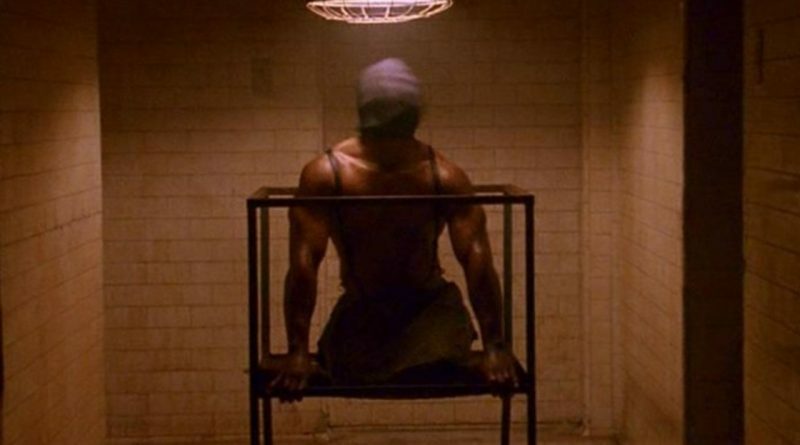
Speaking of which, the visual iconography and narrative themes that horror games have borrowed from Jacob's Ladder are undeniable. Entire boss designs in Silent Hill, which influenced future games, were ripped from the movie in question. A scene we will discuss shortly involves the protagonist going to a party and watching a flesh demon consume his girlfriend. That flesh demon is a boss in Silent Hill 3. Pyramid Head's tongue arm under his head? Yeah, that was ripped from Jacob's Ladder. Creepy nurses with their eyes covered in bandages or rotting flesh? Yup, that too came from Jacob's Ladder. The MANY straightjacket enemy types in Silent Hill are a recurring visual in Jacob's Ladder. The list goes on, and I only mention these notable examples because they are the visuals from the Silent Hill games that became codified tropes throughout horror video games. Nonetheless, none of this should suggest Jacob's Ladder doesn't have its share of historical muses as well.
The Odd Backstory Of What Influenced Jacob's Ladder
Before we jump into everyone's favorite subject, math(s), let's delve into history. It would behoove me not to mention how Jacob's Ladder borrows many of its visuals and narrative themes from pre-existing sources and media. The most important to note is "An Occurrence at Owl Creek" by Ambrose Bierce from 1890. For those unaware, "An Occurrence at Owl Creek" is a seminal work of literature that pioneered the twist ending and was an early example of the stream of consciousness narrative structure. It also lay the foundation for future authors to experiment with storytelling devices like unreliable narrators and non-linear storytelling. It would be histrionics for me to claim it was the first creative endeavor to explore these tropes or idioms. Nonetheless, it popularized them and had a lasting influence. For one thing, the ending to Jacob's Ladder and Silent Hill carbon copy the conclusion to "An Occurrence at Owl Creek."
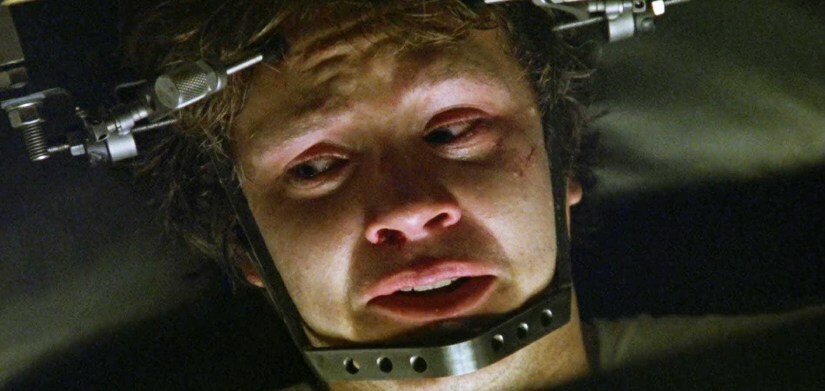
There are many cinematic influences, but the most fundamental comes from The Cabinet of Dr. Caligari, which provides an early prototype of the template used in Jacob's Ladder. Like Owl Creek, The Cabinet of Dr. Caligari deploys a shocking twist ending and conveys its story in what looks and feels like a hellscape. The elements of body horror in Jacob's Ladder have an assortment of influences worth recognizing. H. R. Giger and Francis Bacon are names that need no introduction in the art scene. Bacon's screaming mouth motif is ever-present in Jacob's Ladder, and the few times when the movie gets visceral, it pines for many of Giger's iconic works. Nonetheless, there's a lesser-known influence on the explicitly horrific moments in Jacob's Ladder. Joel-Peter Witkin is a photographer who deals in the macabre and one of the few people in the 90s that actively photographed people with dwarfism and transgender and intersex bodies. Witkin's photographs directly influenced Jacob's Ladder's most iconic scene, its hospital set-piece, which returns me to the negative legacy of Jacob's Ladder. Long-time Silent Hill art lead, Masahiro Ito, often cites Bacon and Witkin as their primary source of inspiration. While Jacob's Ladder and Silent Hill use people with deformities to show their protagonist metaphorically descending into Hell, we cannot say the same about their copycats. Often, horror games and films today make an abominable correlation between mental illness and physical disabilities. This leap of logic, while pervasive in movies and games, is beyond shitty and worthy of condemnation.
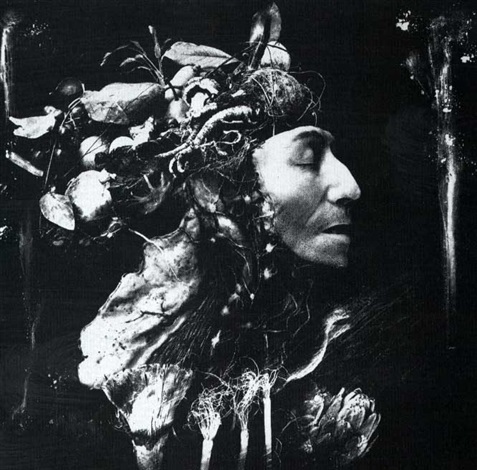
Then there's the part of Jacob's Ladder I have been dancing around since the start of this blog: the government conspiracy subplot. Now, I never claimed that Jacob's Ladder is a "perfect" movie; all I ever said was that it was "influential." Jacob's Ladder, like almost everything in the horror genre, makes the mistake of feeling like it eventually needs to explain why everything in the story is happening. One of its explanations for why its events unfold the way they do is that Jacob was an unwitting test subject to a super soldier serum program during the Vietnam War. It is an incredibly stupid revelation and the subject of significant debates between fans of the film. Some argue this part of the film is a red herring and a figment of Jacob's imagination to rationalize his death as more romantic than it was in actuality. On the other hand, the film makes this part of the story baked into its DNA when it puts up an end card that shares a factoid about rumors of the U.S. military experimenting with hallucinogenics during the Vietnam War. This part of the movie was influenced by "Acid Dreams: The CIA, LSD, and the Sixties Rebellion" by Martin A. Lee and Bruce Shlain. I will only mention in passing that Jacob's Ladder's use of a variety of subplots directly influenced the Silent Hill franchise's use of multiple endings. This specific part of the movie played a role in justifying things like the UFO Ending and horror games overexplaining vagaries through optional routes.
Let's Add Up The Runtime Of The Scenes Important To Silent Hill
| Jacob's Ladder | Silent Hill 3 |
|---|---|
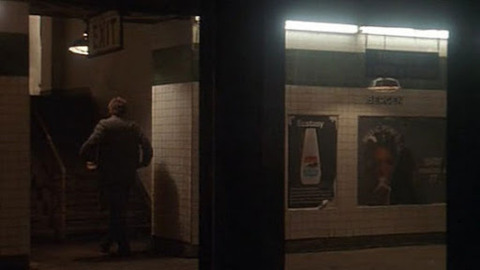 | 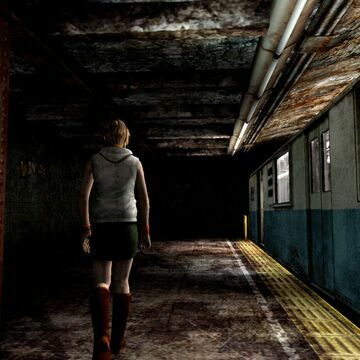 |
Now we come to the "fun" part of this blog! Most databases list the overall playtime of Jacob's Ladder as being 113 minutes. After all of my mythologizing, you might be surprised to know that less than twenty percent of the film delves into explicitly horrific scenes applicable to the games and media it affected. The first scene from the movie that many note as being directly influential on horror games is its opening subway scene. During this sequence, Jacob navigates a haunting subway train and comes across a tentacle monster consuming a sleeping homeless person. After exiting the train in a panic, a careening subway populated with faceless zombies nearly hits him. While shocking and essential to Silent Hill and its many cheaper clones, both of these moments amount to about five minutes and twenty seconds total. Nonetheless, what I find incredibly compelling about Jacob's Ladder is that it spaces its visceral moments with long atmospheric mise en scene-styled establishing shots. While there are a handful of creepy interjections featuring faceless figures and a rampaging car, it's not until the party scene when we witness the film's next actual "horror" scene.
And that party scene, even if we incorporate its establishing shots, clocks in at slightly above three whole minutes. If you want to include the scene involving the psychic, that bumps things up to about three minutes and twenty-three seconds. Suppose you want to be generous and have that earlier moment with the rampaging car included in this compilation video. Even if I lop in the "hilarious" scene where Jacob encounters street prostitutes, we only add one minute and thirty seconds of air time. The scene with just the car is approximately forty seconds. I'll also add in the horrific moment after the party wherein Jacob's girlfriend forcibly places him in an ice bath in an attempt to deal with his fever. The scene does wonders to underscore how Jacob is truly alone as his neighbors assist his girlfriend, Jezebel, in dipping him into a painful bath. Even if I threw in the dream sequences and Jacob waking up, this scene amounts to about five minutes and twenty seconds. Even before we get to THE SCENE, everyone talks about when they discuss Jacob's Ladder, only about sixteen minutes of its first forty to fifty minutes are directly influential to the video games and other works it inspired.
This leads us to the single most "important" part of Jacob's Ladder: the hospital scene. Before this scene, Jacob sustained multiple injuries after stumbling out of a car. After being assessed by doctors and nurses at what we initially think is a clinic, he is carted into an urgent care ward. However, while in transit, he realizes the hospital staff are either a part of a grand conspiracy, or demons seeking to keep him in limbo; it depends on how you read the story. This is the set-piece that single-handedly inspired Keiichiro Toyama, the creator of Silent Hill, and Akihiro Imamura, the series' lead programmer, to make horror games. Nonetheless, it is ONLY four minutes and twenty-seven minutes long! In fact, if you only include Jacob's slow descent into "Hell," then we are looking at about three minutes. That's right! Three minutes in an approximately two-hour film inspired the aesthetical choices in horror video games for almost thirty years. And with that scene, my basic arithmetic rounds things up to about twenty minutes and twenty-four seconds. That's it. The creative minds behind the PS2 horror game "Golden Age" were inspired by approximately twenty minutes of a 1990 film that borrowed its influences from an 1890 short story and an arthouse photographer. Isn't life funny?
Brainstorming Other Examples
While researching this blog, I thought of an endless stream of other examples of games "borrowing" only a tiny portion of a film or source. The first examples that came to mind were the MANY games that draw inspiration from the shootout scene in Heat. While games like Payday and Kane and Lynch try to emulate the shootout's kinetic action and heart-thumping adrenaline rush, none of them tackle Heat's hardboiled neo-noir dialogue. Also lost in the mix in every Heat-inspired heist video game is the sense of cat and mouse with Robert De Niro and Al Pacino's characters. And it is fine if you like the shootout scene in Heat, but the real fans of Heat appreciate the coffeehouse meeting between Pacino and De Niro as the film's actual best moment. It is a rare scene where you can cut the sense of tension with a butter knife, and few have even come close to copying Michael Mann's skeletal but tight dialogue.
I'm going to excuse the Fallout franchise, obviously drawing inspiration from Mad Max and Metal Gear Solid pulling Snake from Escape from New York. Both examples are games that are honest about their influences while also providing their own stories and going in directions that differ from their respective inspirations. I'm also not talking about games like Earthbound, which pulls one confrontation or character design from a misconstrued scene from a movie. As many of you know, the final boss of Earthbound is an optical illusion depicting a fetus because the game's creative lead accidentally walked into an adult movie and thought they overheard a rape scene. And I'm on the fence when it comes to games like Deadly Premonition, which seek to emulate the aesthetics and experiences from another source entirely. With Silent Hill and Jacob's Ladder, we are talking about Shark Fin Soup rather than minestrone. Regardless, if you can think of other instances of games drawing inspiration from a small portion of a film or book, feel free to chime in with your examples.
Author's Note: Hey everyone, I actually recorded a podcast about this very topic! If you want to hear me talk with @thatpinguino about the legacy and importance of Jacob's Ladder, here you go!
Log in to comment